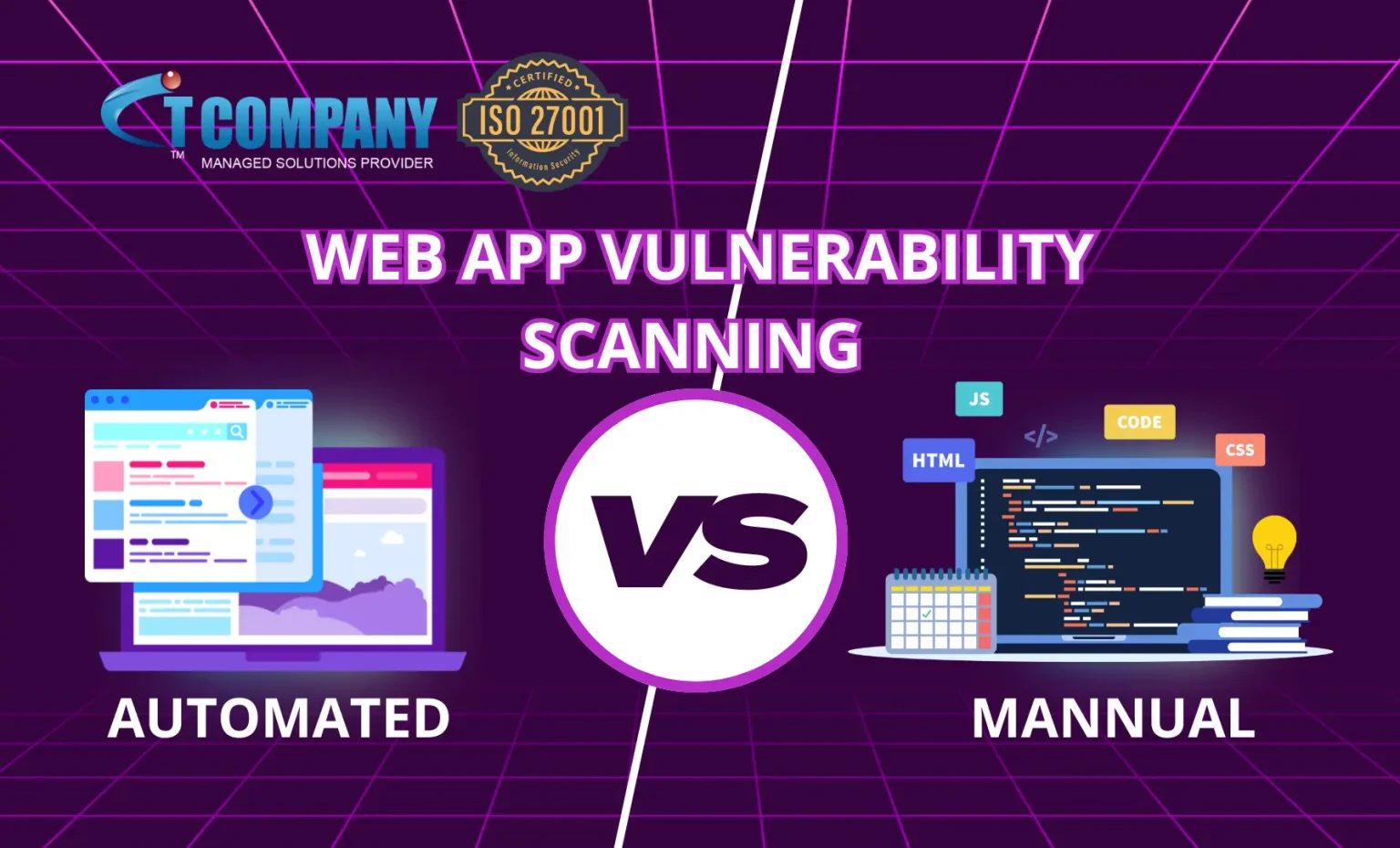In the ever-evolving landscape of web application security, organizations must make critical decisions regarding their vulnerability scanning approach. Choosing between automated and manual web app vulnerability scanning can significantly impact an organization’s security posture.
For large organizations, web developers, and IT professionals, integrating ISO 27001 services with these scanning methods enhances overall security strategy.
What is Web Application Vulnerability Scanning?
Web application vulnerability scanning identifies security flaws. It uses automated tools or manual methods. The goal is to detect weaknesses early. Regular scanning helps prevent potential attacks.
For example, tools might identify vulnerabilities such as SQL injection (where malicious code can be inserted into a query) or cross-site scripting (XSS) (where attackers inject scripts into web pages). The goal is to find and address these vulnerabilities to prevent potential exploitation by attackers.
Illustrative Chart
| Vulnerability | Description | Potential Impact | Example |
| SQL Injection | Inserting malicious SQL queries into input fields | Data breach or database manipulation | Accessing unauthorized data |
| Cross-Site Scripting (XSS) | Injecting malicious scripts into web pages | Theft of session cookies or defacement | Altering webpage content |
| Security Misconfiguration | Incorrectly configured security settings or permissions | Unauthorized access or data leakage | Exposed admin panels |
By using vulnerability scanning, you can identify these issues before they can be exploited, thus protecting your web application from potential threats.
Automated Vulnerability Scanning
Advantages
- Efficiency and Speed: Automated scanners can quickly scan large web applications, identifying vulnerabilities in a fraction of the time it would take manually. This makes them ideal for regular checks and organizations with large, complex applications.
- Coverage: Automated tools are excellent at covering vast areas of a web application, from known vulnerabilities to misconfigurations. They provide a comprehensive overview, ensuring that even minor issues are not overlooked.
- Cost-Effective: Automated scanning is cost-effective for ongoing checks. It’s ideal for organizations with tight budgets. Routine automation saves both time and money compared to manual testing.
Limitations
- False Positives/Negatives: Automated tools may generate false positives, marking safe elements as vulnerable, or false negatives, missing actual vulnerabilities. This can lead to wasted resources and a false sense of security.
- Lack of Contextual Understanding: Automation lacks the human intuition needed to understand the business logic or contextual subtleties that may expose unique vulnerabilities.
- Static Rules: Often, automated tools rely on predefined rules and patterns, which may not keep up with the latest threats without frequent updates.
Manual Vulnerability Scanning
Advantages
- In-depth Analysis: Human testers bring the ability to understand complex logic and identify vulnerabilities that automated tools might miss, such as those involving business logic or complex interactions.
- Contextual Awareness: Manual testing allows for a deeper understanding of the application context, enabling testers to identify unique vulnerabilities and simulate real-world attack scenarios.
- Adaptability: Human testers can adapt on the fly, adjusting their techniques based on initial findings and homing in on potential problem areas.
Limitations
- Time-Consuming: Manual scanning is significantly slower than automated processes, making it less suitable for large applications or when time is of the essence.
- Higher Costs: It is typically more expensive due to the need for skilled professionals, which might be a barrier for some organizations, especially smaller ones.
- Limited Coverage: Unlike automated tools, a manual approach can miss more common, easily identifiable vulnerabilities due to time constraints.
The Hybrid Approach
Given the pros and cons of both automated and manual scanning methods, many organizations are adopting a hybrid approach. This strategy leverages the speed and coverage of automated tools while incorporating the depth and contextual understanding of manual testing.
- Regular Automated Scans: Use automated tools for regular, routine scans to quickly identify common vulnerabilities and maintain a baseline level of security.
- Periodic Manual Testing: Complement automated scans with periodic manual testing to uncover deeper, more complex issues that require human intuition and ingenuity.
- Continuous Integration: Integrate both methods into a continuous security testing framework to ensure vulnerabilities are caught early in the development cycle, reducing remediation costs, and improving overall security posture.
The Importance of Professional Vulnerability Scanning Services
In today’s digital landscape, the importance of robust vulnerability scanning cannot be overstated. Organizations must stay ahead of potential threats to safeguard sensitive data and maintain customer trust.
For those experienced in vulnerability scanning, leveraging the services of a reputable IT company can significantly enhance your security measures. Such companies typically provide affordable, state-of-the-art vulnerability scanning solutions equipped with all the necessary tools and expertise required to protect any organization’s digital assets.
If you are ready to elevate your security strategy and ensure comprehensive protection for your web applications, consider partnering with an advanced IT service provider.

Conclusion
Choosing between automated and manual vulnerability scanning does not have to be an either-or decision. By understanding the strengths and weaknesses of each method, you can tailor your approach to meet the specific needs of your organization.
A balanced strategy that combines both automated and manual scanning can provide comprehensive protection, keeping your web applications secure against evolving threats.
FAQs
What is Web Application Vulnerability Scanning?
How to Test Web Application Vulnerability?
How Do I Scan an App for Vulnerabilities?
What Tools Would You Use to Scan a Web Application for Vulnerabilities?

